
AI Content Creation
AI-Powered Special Effects: Revolutionizing Visual Storytelling

Contents
- 1 What Are AI-Powered Special Effects?
- 2 How AI is Changing the SFX Landscape
- 3 Key Technologies Behind AI in Special Effects
- 4 Benefits of Using AI for Special Effects
- 5 AI in Hollywood and Modern Filmmaking
- 6 Real-World Examples of AI-Powered Special Effects
- 7 Challenges and Ethical Concerns
- 8 The Future of AI in Special Effects
In today’s fast-evolving film and entertainment industry, AI-powered special effects are revolutionizing the way visual stories are crafted. These intelligent tools are enabling creators to achieve complex visuals that once demanded massive budgets and long production timelines. With the help of artificial intelligence, the impossible is quickly becoming the new standard.
Moreover, AI doesn’t just enhance visuals—it transforms workflows. From automating tedious post-production tasks to generating real-time effects during shooting, AI is streamlining every stage of the creative process. As a result, filmmakers now have more freedom, speed, and precision than ever before.
In the sections that follow, we’ll explore what AI-powered special effects are, how they work, and why they’re shaping the future of filmmaking.
What Are AI-Powered Special Effects?
AI-powered special effects are digital enhancements in film, television, and video production that are created or improved using artificial intelligence. Rather than relying solely on manual techniques or traditional CGI, these effects leverage machine learning algorithms, neural networks, and data-driven automation to generate realistic visuals with greater speed and accuracy.
For instance, AI can analyze thousands of frames to automatically track movement, replace backgrounds, or enhance lighting and textures. As a result, tasks that used to take days of manual keyframing or rotoscoping can now be executed in a fraction of the time.
Additionally, AI can simulate natural elements—like fire, water, or smoke—with remarkable realism, adapt facial expressions, or even recreate an actor’s appearance for de-aging or digital doubles. Because of these capabilities, AI is no longer a futuristic add-on; it is a core component of many modern production pipelines.
Ultimately, AI-powered special effects represent a powerful blend of creativity and computation, opening new doors for artists, studios, and storytellers alike.
How AI is Changing the SFX Landscape
The impact of AI-powered special effects on the SFX (special effects) industry has been nothing short of transformative. Unlike traditional methods, which often required labor-intensive processes and extensive manpower, AI introduces automation, speed, and precision that reshape the entire production timeline.
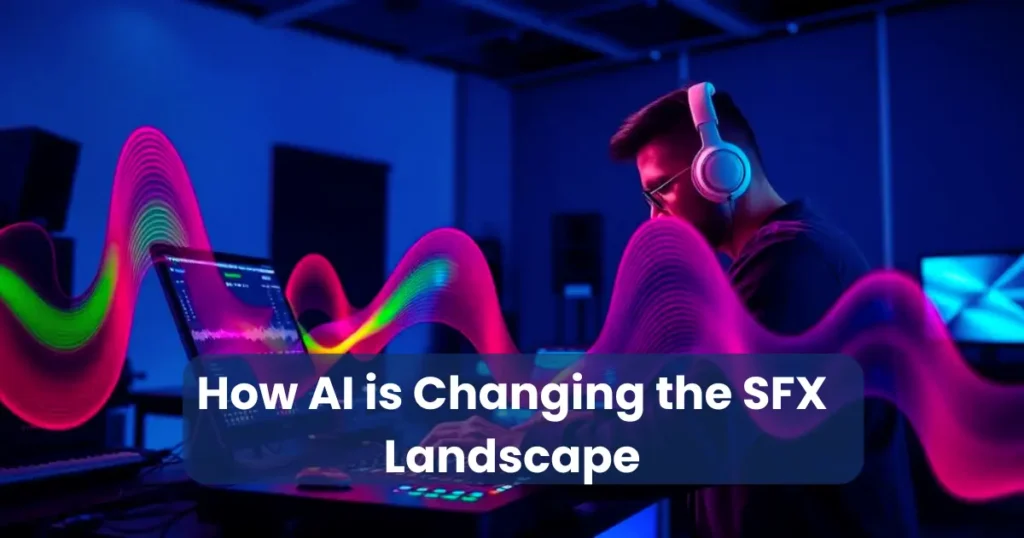
To begin with, AI can significantly reduce the time spent on routine tasks. For example, object tracking, rotoscoping, and background cleanup—previously handled frame by frame—can now be automated through machine learning. This not only speeds up post-production but also allows artists to focus on more creative and conceptual work.
Moreover, AI tools are making special effects more accessible. Indie filmmakers and small studios, who may not have had the budget for complex effects, can now achieve high-quality results using AI-powered platforms. As a result, the playing field is gradually leveling, encouraging a more diverse range of visual storytelling.
Additionally, AI is enabling real-time feedback during filming. With real-time rendering, directors can preview complex visual effects on set instead of waiting weeks for post-production renders. Consequently, creative decisions can be made faster and with greater confidence.
Furthermore, the collaboration between human creativity and AI precision is leading to entirely new forms of expression. Artists can experiment with styles, physics simulations, or facial animations that would have been technically impossible just a few years ago.
In essence, the SFX landscape is evolving rapidly, and AI-powered special effects are at the heart of this change—making productions faster, smarter, and more visually compelling.
Key Technologies Behind AI in Special Effects
Behind the rise of AI-powered special effects lies a powerful stack of technologies that make these advancements possible. These tools not only enhance efficiency but also expand the creative possibilities available to filmmakers and digital artists.
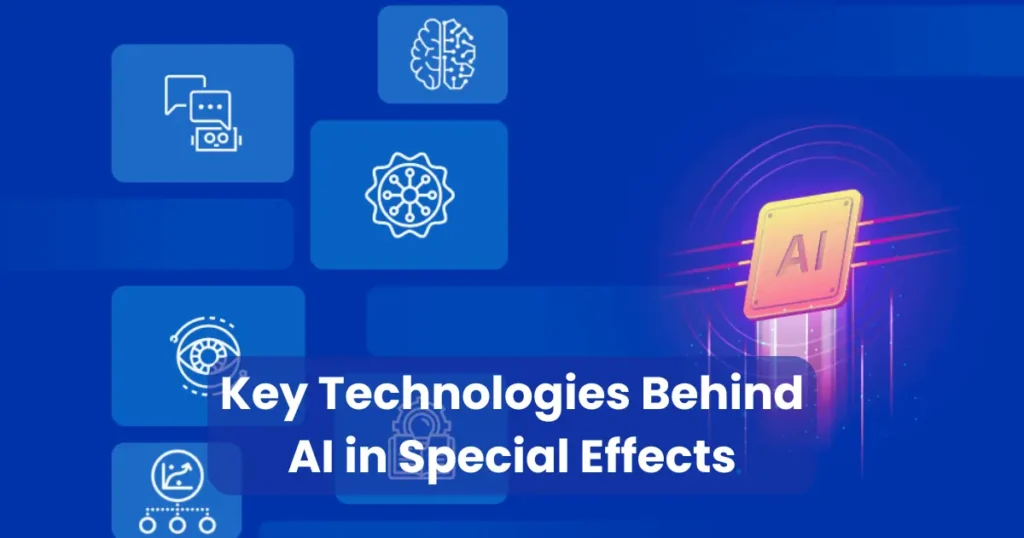
1. Machine Learning (ML)
At the core of AI-driven tools is machine learning, which enables systems to learn from vast amounts of visual data. Through training, algorithms become capable of recognizing patterns, identifying objects, and predicting motion—critical tasks in automating visual effects.
2. Deep Learning
Deep learning, a subset of ML, focuses on neural networks that mimic human decision-making. This is especially useful for facial recognition, voice syncing, and digital makeup, all of which are commonly seen in AI-powered special effects today.
3. Computer Vision
Computer vision allows AI to “see” and interpret video and image data. With this technology, AI can detect human figures, isolate objects, and perform scene segmentation. As a result, editors can automate complex tasks such as background replacement or depth estimation.
4. Generative Adversarial Networks (GANs)
GANs consist of two neural networks—the generator and the discriminator—that work together to create hyper-realistic content. They are often used in deepfake technology, digital doubles, and visual upscaling. This contributes significantly to the realism achieved in modern special effects.
5. Natural Language Processing (NLP)
Though not visual by nature, NLP is increasingly integrated with visual effects pipelines. For example, voice commands can guide AI systems in editing tasks, or text-to-video prompts can initiate specific visual sequences.
Together, these technologies form the engine behind modern AI-powered special effects, allowing creators to push the boundaries of what’s visually possible—faster, cheaper, and more intuitively than ever before.
Benefits of Using AI for Special Effects
The integration of AI-powered special effects into modern production has introduced a wide range of benefits. These advantages are transforming both how effects are created and who gets to create them.
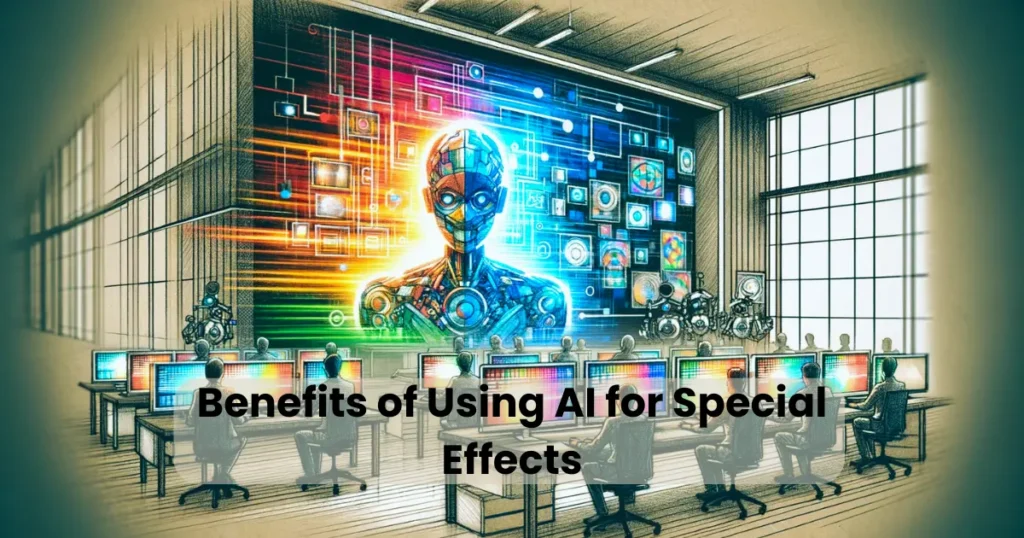
1. Faster Production Times
First and foremost, AI significantly reduces the time required for post-production tasks. What used to take days or even weeks—like rotoscoping, background removal, or motion tracking—can now be done in hours. As a result, production teams can meet tighter deadlines without compromising quality.
2. Cost Efficiency
Because AI automates repetitive tasks, fewer manual hours are needed. Therefore, smaller teams can produce high-end visuals without hiring large VFX departments. Over time, this leads to substantial cost savings—particularly for independent filmmakers and startups.
3. Enhanced Creativity
With technical barriers minimized, artists can explore more creative possibilities. For example, AI can suggest visual styles, generate test renders, or offer creative enhancements that spark new ideas. Consequently, the role of the VFX artist is becoming more focused on vision and direction.
4. Real-Time Effects and Previews
In many cases, AI enables real-time rendering. Directors and producers can instantly see how special effects will look while shooting on set. This instant feedback loop leads to better decision-making and fewer costly reshoots.
5. Improved Accuracy and Consistency
AI systems don’t get tired or lose focus. They can apply the same effect across hundreds of frames with perfect consistency. Whether it’s stabilizing footage or adjusting lighting, the final result is more polished and reliable.
6. Accessibility for Smaller Studios
Traditionally, advanced effects were reserved for major studios with big budgets. However, thanks to AI-powered special effects, small studios and solo creators now have access to tools that were once out of reach. This democratization is helping to diversify the voices and stories in the industry.
Altogether, these benefits highlight why AI is not just a technological upgrade—it’s a creative revolution that’s reshaping the future of visual storytelling.
AI in Hollywood and Modern Filmmaking
The adoption of AI-powered special effects in Hollywood has accelerated rapidly over the past few years. While large studios have always embraced innovation, artificial intelligence is now reshaping how blockbusters are planned, filmed, and finalized.
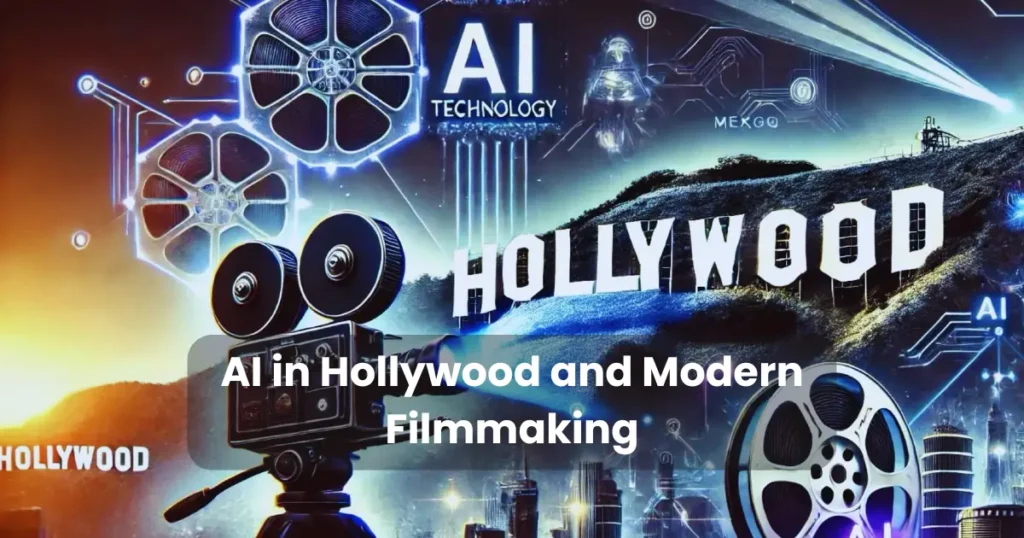
A-List Studios Are Leading the Way
Major production houses like Marvel Studios, Warner Bros., and Lucasfilm have already integrated AI into their visual effects pipelines. For instance, AI-assisted facial aging was used in The Irishman, allowing Robert De Niro and other actors to portray their younger selves without manual CGI. Similarly, de-aging and digital doubles are becoming more common in superhero franchises and action-packed sagas.
Enhanced Pre-Visualization and Storyboarding
Furthermore, AI tools are helping filmmakers generate detailed pre-visualizations before cameras even start rolling. By simulating scenes with AI, directors can preview complex shots, make instant adjustments, and optimize both budget and scheduling. Consequently, storytelling becomes more flexible and efficient from the very start.
Seamless Post-Production Workflows
In post-production, AI is used to clean up scenes, enhance lighting, and stabilize footage—often in real-time. Editors and VFX teams can use AI to automatically identify and mask elements or match color grading across scenes. This reduces the amount of manual labor involved and boosts the final visual quality.
Smaller Productions Are Benefiting Too
Interestingly, it’s not just blockbuster films that benefit from AI-powered special effects. Independent filmmakers and smaller studios are also using AI to compete with much larger players. Affordable AI tools have made high-quality effects accessible without a Hollywood-level budget.
In short, Hollywood is not just using AI—it’s depending on it. From concept to final cut, AI-powered special effects are becoming an essential part of modern filmmaking, changing the rules for storytelling on screen.
Real-World Examples of AI-Powered Special Effects
Real-world applications of AI-powered special effects are no longer theoretical—they’re actively transforming how some of the world’s most iconic films and shows are made. These examples demonstrate just how deeply AI has embedded itself into the entertainment industry.
1. The Irishman (2019)
One of the most talked-about uses of AI in film was Martin Scorsese’s The Irishman. De-aging technology, powered in part by AI and deep learning, allowed actors like Robert De Niro and Al Pacino to appear decades younger without the need for traditional prosthetics or motion capture suits. This technique made it possible to shoot extended scenes with aged or youthful versions of the same actor in a seamless manner.
2. Avengers: Endgame (2019)
Marvel Studios embraced AI-powered special effects to manage large-scale battle scenes. AI helped with crowd simulation, motion tracking, and facial replacement for stunt doubles—saving countless hours of manual labor and ensuring continuity across complex action sequences.
3. Star Wars: The Rise of Skywalker (2019)
AI was used to recreate scenes with the late Carrie Fisher by combining archival footage and synthetic enhancements. Through facial mapping and deepfake-like technology, her character, Princess Leia, could be included in the storyline with emotional and narrative coherence.
4. Welcome to Chechnya (2020)
This powerful documentary used AI-driven face replacement to protect the identities of LGBTQ+ activists. Real-time facial masking ensured that participants could speak openly without fear, while their visual presence on screen remained human and expressive.
5. YouTube and TikTok Creators
Beyond the silver screen, creators on platforms like YouTube and TikTok are using AI-powered special effects to enhance their videos. Tools like Runway ML and Adobe’s Sensei allow content creators to generate backgrounds, apply motion tracking, and add cinematic effects—no expensive equipment or VFX team required.
These real-world examples show that AI-powered special effects are not just for big-budget productions. They’re being adopted across genres, budgets, and platforms—making high-end visual storytelling more accessible and dynamic than ever.
Challenges and Ethical Concerns
Although AI-powered special effects offer groundbreaking possibilities, they also bring significant challenges and raise ethical questions that cannot be ignored. As technology advances rapidly, so too must the conversations surrounding its responsible use.
1. Quality Control and Over-Reliance on Automation
Even though AI can automate time-consuming tasks, it doesn’t always deliver perfect results. For instance, facial replacements or motion predictions may still require human correction to appear natural. Therefore, heavy reliance on AI might risk compromising artistic quality when not monitored carefully.
2. Job Displacement in the VFX Industry
Another pressing concern is the potential impact on employment. As AI-powered special effects continue to evolve, traditional roles such as rotoscope artists, matte painters, and even animators may see reduced demand. While AI creates new opportunities, it may also displace skilled professionals who rely on hands-on craftsmanship.
3. Ethical Issues with Deepfakes and Digital Doubles
AI’s ability to replicate faces and voices introduces serious ethical dilemmas. Digital resurrection of deceased actors or the unauthorized use of an actor’s likeness can blur the lines between homage and exploitation. Without strict guidelines, these practices could lead to consent and copyright violations.
4. Bias and Representation
AI systems learn from existing datasets, which often contain biases. As a result, AI-powered special effects may unintentionally reinforce stereotypes or produce skewed visual representations. Inclusive data and oversight are essential to ensure fairness and authenticity in storytelling.
5. Privacy and Identity Risks
Furthermore, advanced AI can replicate real people’s appearances with alarming accuracy. This opens the door to privacy breaches and potential misuse, especially in the era of viral content and digital manipulation.
In short, while AI-powered special effects revolutionize what’s possible in filmmaking, they also demand new ethical frameworks. Creators, technologists, and policymakers must collaborate to ensure innovation does not come at the cost of responsibility.
The Future of AI in Special Effects
Looking ahead, the future of AI-powered special effects appears not only promising but also transformative. As both computing power and machine learning algorithms continue to evolve, their impact on the film industry is expected to deepen even further.
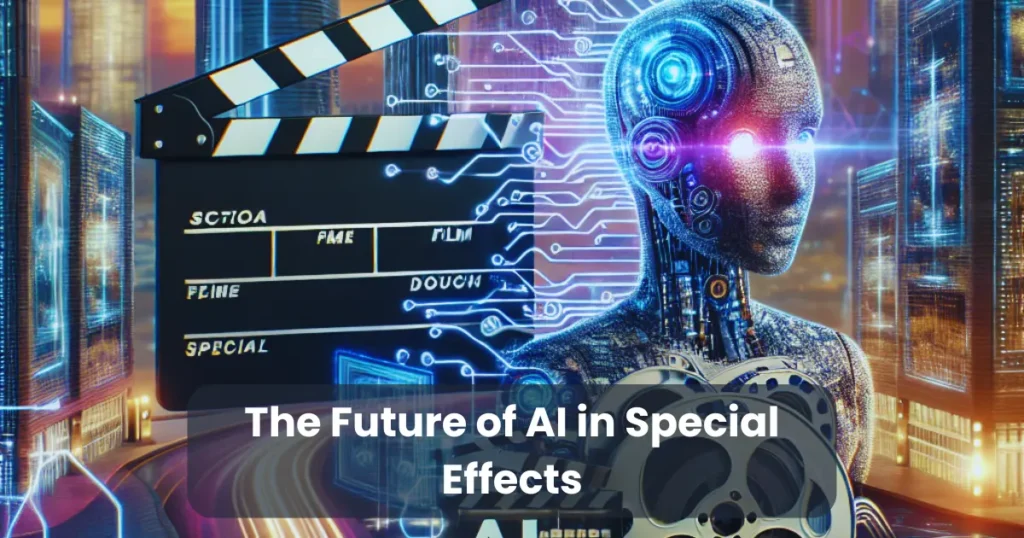
1. Hyper-Realistic Visuals in Real Time
Soon, filmmakers may be able to generate entire environments and characters using AI—instantly and photorealistically. Real-time rendering powered by AI will allow directors to make creative decisions on the fly, accelerating production timelines while maintaining cinematic quality.
2. Personalized Viewing Experiences
Moreover, AI could enable viewers to interact with content in new ways. Imagine movies that change based on your preferences or visual effects that adapt to different cultural aesthetics. This level of personalization could redefine how audiences engage with visual storytelling.
3. Broader Accessibility for All Creators
As AI tools become more intuitive and affordable, independent creators, educators, and even students will gain access to capabilities once reserved for multimillion-dollar studios. Consequently, a new wave of diverse, global voices will emerge in visual effects production.
4. Integration with Virtual and Augmented Reality
In addition, AI-powered special effects will play a crucial role in the future of VR and AR. From immersive virtual sets to interactive holograms, AI will help bring impossible worlds to life—blurring the boundaries between digital and physical experiences.
5. Ethical Guidelines and AI Governance
At the same time, ongoing development will likely require strong ethical oversight. Future legislation and creative industry standards will need to keep pace with AI capabilities, ensuring that creators use these tools responsibly and transparently.
In essence, AI-powered special effects are poised to push the boundaries of creativity like never before. The fusion of artificial intelligence and artistic vision promises a future where storytelling becomes more immersive, inclusive, and imaginative.
Conclusion
The rise of AI-powered special effects marks a transformative shift in the world of filmmaking and visual storytelling. From speeding up production times to democratizing access to high-quality visual effects, AI has opened up exciting new possibilities for both major studios and independent creators alike.
As we’ve seen, AI is not only enhancing creativity but also enabling more realistic, immersive experiences for audiences around the world. However, with great power comes great responsibility—ethical concerns and challenges around job displacement, bias, and privacy must be addressed to ensure that AI’s potential is harnessed responsibly.
Looking to the future, AI-powered special effects will continue to evolve, offering even more innovative ways to craft stories and connect with audiences. As technology advances, the lines between the real and the digital will blur even further, pushing the boundaries of what we thought was possible in visual media.
Ultimately, AI-powered special effects are reshaping the creative landscape, and as these technologies mature, the possibilities are truly limitless.


How to Edit AI-Generated Videos Effectively
Updated on April 27, 2025
Read More